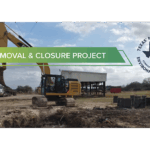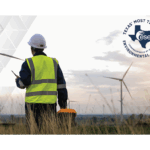Why Wetlands Evaluation is Crucial Before Development: A Lesson from Fairwater Community
In recent weeks, the Fairwater community in Montgomery has been grappling with an unexpected and persistent issue—underground water causing severe erosion. Despite efforts from local authorities, led by the Municipal Utility District 166, the source of this water remains a mystery. The state’s water development board has no records of a natural spring within three miles of the subdivision, yet the problem persists.
This situation highlights a critical aspect often overlooked in urban planning: the necessity of a thorough wetlands evaluation before any development begins. Here’s why this step is indispensable.
The Case of the Fairwater Community
Residents of Fairwater have witnessed water seeping into manholes and causing havoc in their yards. Katherine Ridlehuber’s backyard has been particularly affected, turning her life upside down. Despite several tests, including a chlorine test to check for leaks from household pipes, the source of the water remains untreated and unidentified.
Persistent Problems
The local mud district has tried various measures to mitigate the issue, including enlisting engineering crews to build a reinforced retaining wall. However, progress has been delayed due to heavy rains. Now, a new firm is set to start work by the end of October, with completion expected in three months.
The Importance of Wetlands Evaluation
A wetlands evaluation could have potentially identified the underground water sources contributing to the erosion problem before construction even began. These evaluations assess the presence and function of wetlands in an area, enabling developers to understand the hydrological impacts and take preventive measures.
Preventing Future Issues
Comprehensive evaluations can guide the placement of infrastructure to avoid water-related issues, ensuring the longevity and safety of the development. Ignoring this crucial step can lead to costly repairs, environmental damage, and disruptions for residents.
Environmental and Community Well-being
By prioritizing wetlands evaluations, we not only protect the environment but also safeguard the well-being of communities. This proactive approach ensures that residents, like those in Fairwater, are not left to deal with unforeseen and disruptive issues.
In conclusion, the Fairwater community’s experience underscores the necessity of wetlands evaluations in urban planning. As we continue to develop our urban landscapes, let’s remember to respect and understand the natural environment to build sustainable and resilient communities.
#UrbanPlanning #WetlandsEvaluation #CommunitySafety #Fairwater #SustainableDevelopment









